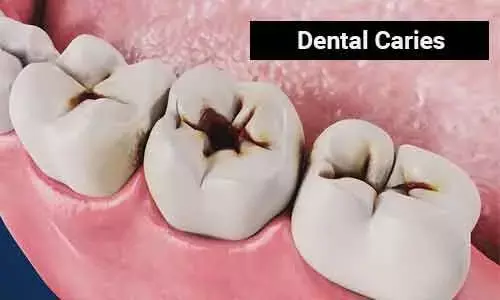- Home
- Medical news & Guidelines
- Anesthesiology
- Cardiology and CTVS
- Critical Care
- Dentistry
- Dermatology
- Diabetes and Endocrinology
- ENT
- Gastroenterology
- Medicine
- Nephrology
- Neurology
- Obstretics-Gynaecology
- Oncology
- Ophthalmology
- Orthopaedics
- Pediatrics-Neonatology
- Psychiatry
- Pulmonology
- Radiology
- Surgery
- Urology
- Laboratory Medicine
- Diet
- Nursing
- Paramedical
- Physiotherapy
- Health news
- Fact Check
- Bone Health Fact Check
- Brain Health Fact Check
- Cancer Related Fact Check
- Child Care Fact Check
- Dental and oral health fact check
- Diabetes and metabolic health fact check
- Diet and Nutrition Fact Check
- Eye and ENT Care Fact Check
- Fitness fact check
- Gut health fact check
- Heart health fact check
- Kidney health fact check
- Medical education fact check
- Men's health fact check
- Respiratory fact check
- Skin and hair care fact check
- Vaccine and Immunization fact check
- Women's health fact check
- AYUSH
- State News
- Andaman and Nicobar Islands
- Andhra Pradesh
- Arunachal Pradesh
- Assam
- Bihar
- Chandigarh
- Chattisgarh
- Dadra and Nagar Haveli
- Daman and Diu
- Delhi
- Goa
- Gujarat
- Haryana
- Himachal Pradesh
- Jammu & Kashmir
- Jharkhand
- Karnataka
- Kerala
- Ladakh
- Lakshadweep
- Madhya Pradesh
- Maharashtra
- Manipur
- Meghalaya
- Mizoram
- Nagaland
- Odisha
- Puducherry
- Punjab
- Rajasthan
- Sikkim
- Tamil Nadu
- Telangana
- Tripura
- Uttar Pradesh
- Uttrakhand
- West Bengal
- Medical Education
- Industry
Self-etch adhesives have antibacterial effect on carious dentin, Study reveals

Therefore, Jana Schmidt and associates from the Department of Cariology, Endodontology and Periodontology, University of Leipzig, Germany conducted the present study to compare the antibacterial effect of a self-etch adhesive with and without the brominated monomer 12-methacryloyloxydodecyl-pyridinium bromide (MDPB) on carious dentin after selective caries removal.
The authors studied a total of 10 patients showing deep primary carious lesions at two posterior teeth without pulpal symptoms. At visit I, carious tissue was selectively removed and carious dentin was sampled with a sterile roundbur. One cavity was restored with composite (SDR, Ceram X; DENTSPLY DeTrey) using an MDPB-containing self-etch adhesive (Clearfil Protect Bond, Kuraray Noritake; PB). The other restoration served as a control (Clearfil SE Bond II, Kuraray Noritake; SE).
At visit II after 8 weeks, carious dentin was sampled again. Bacterial growth in carious dentin was differentiated using microbial cultivation. Bacterial DNA from intact cells and cell-free DNA were quantified using 16S rRNA gene-based real-time PCR and the microbial community composition was analyzed by amplicon deep-sequencing. Wilcoxon test was applied for statistical analysis.
The results showed-
a. Both treatments showed a decrease of intact bacterial cells in carious dentin at visit II compared to visit I (PB: visit I: 1.1*106, visit II: 1.7*105 (p = 0.03); SE: visit I: 1.1*107, visit II = 2.4*105 (p = 0.002)).
b. No statistically significant reduction of cell-free bacterial DNA was detected (PB: visit I: 6.1*105, visit II: 1.6*105 (p = 0.08); SE: visit I: 5.3*105, visit II: 2.9*105 (p = 0.10)).
c. The decrease of intact cell-derived (p = 0.371) and cell-free DNA (p = 0.455) did not differ significantly between PB and SE.
d. Lactobacillus was most abundant within the microbial community at both visits.
e. Alpha-diversity was not affected by treatment and samples showed high intra- and interindividual diversity.
Therefore, the authors concluded that "both self-etch adhesives have an antibacterial effect due to a decrease of bacterial DNA after selective caries removal. However, the results do not reveal any additional antibacterial effect by MDPB."
Dr. Nandita Mohan is a practicing pediatric dentist with more than 5 years of clinical work experience. Along with this, she is equally interested in keeping herself up to date about the latest developments in the field of medicine and dentistry which is the driving force for her to be in association with Medical Dialogues. She also has her name attached with many publications; both national and international. She has pursued her BDS from Rajiv Gandhi University of Health Sciences, Bangalore and later went to enter her dream specialty (MDS) in the Department of Pedodontics and Preventive Dentistry from Pt. B.D. Sharma University of Health Sciences. Through all the years of experience, her core interest in learning something new has never stopped. She can be contacted at editorial@medicaldialogues.in. Contact no. 011-43720751
Dr Kamal Kant Kohli-MBBS, DTCD- a chest specialist with more than 30 years of practice and a flair for writing clinical articles, Dr Kamal Kant Kohli joined Medical Dialogues as a Chief Editor of Medical News. Besides writing articles, as an editor, he proofreads and verifies all the medical content published on Medical Dialogues including those coming from journals, studies,medical conferences,guidelines etc. Email: drkohli@medicaldialogues.in. Contact no. 011-43720751


